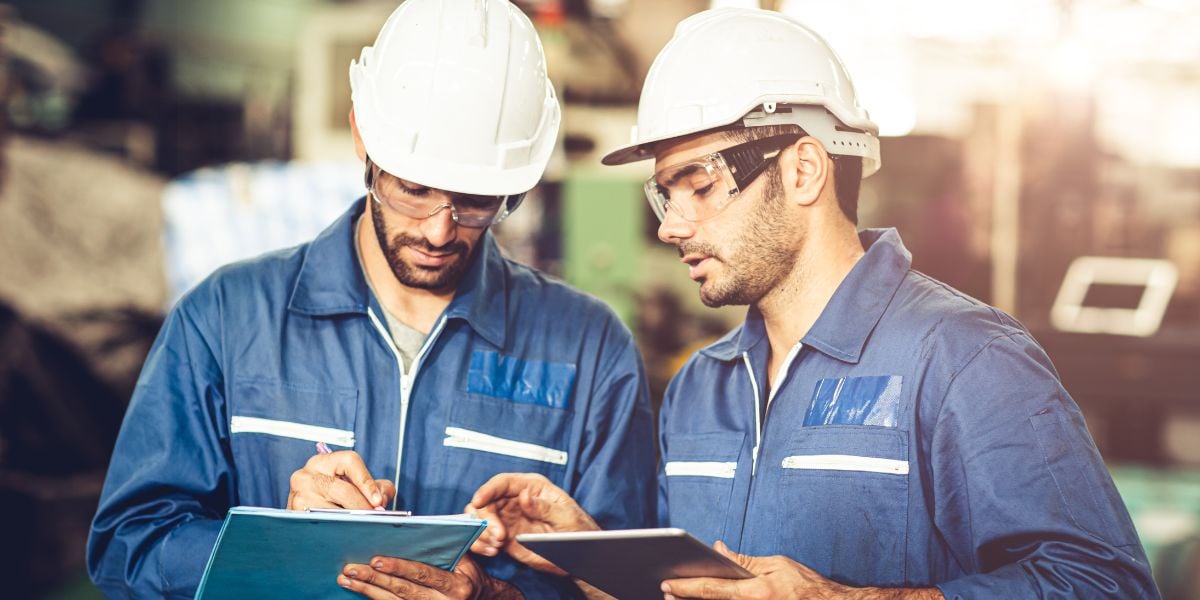4 min read
Improving Safety and Work Culture in Engineering Careers
Stonewall Engineering
May 31, 2023
In the engineering sector, workplace culture and safety are intricately intertwined, forming a nexus that's integral to organizational success. As the industry diversifies and broadens its reach, understanding the crucial role that an inclusive and diverse culture plays in fostering safety becomes more important.
This blog delves into this symbiotic relationship, showcasing how diversity not only boosts engagement and innovation but also paves the way for the implementation of robust safety protocols. Join us as we unravel the interconnected dynamics of culture and safety in the engineering workplace.
Engineering is known for producing great minds and remarkable innovations, but it still has some weaknesses to address. The two biggest problems are interconnected — a lack of workplace culture and safety. As the industry becomes more diverse and engages a broader audience, it can also implement more effective safety protocols.
- How Culture and Safety Are Connected
- Steps to Improve Workplace Culture and Safety
- Work Culture and Safety Walk Hand in Hand
How Culture and Safety Are Connected
A diverse work culture is a productive work culture. According to a 2018 study by McKinsey, businesses with diverse leadership were 33% more likely to outperform their competitors. Building a diverse workforce in lower-level positions also has several huge benefits relating to safety.
1. Employee Engagement
A diverse culture where every background has equal representation is an excellent environment for employee discussions. Everyone feels comfortable voicing their thoughts and the company gets a much wider range of perspectives. Diversity leads to more productive dialogue and higher engagement.
Higher engagement directly leads to better safety protocols. Businesses with high engagement scores had 70% fewer safety incidents than businesses with low engagement scores.
2. Industry Innovation
When professional engineers are engaged and empowered, amazing innovations will inevitably follow. Although engineers are intelligent, they’re still humans. Many engineers have reported experiencing mental health problems due to the industry’s fast pace and high standards. Diversity doesn’t make engineering easier, but it does help employees feel more inclined to try new things.
A diverse culture can lead to the development of new protocols and technologies that improve the safety of engineering, manufacturing, construction and other related industries. Amazing things can happen when the world’s greatest minds feel empowered to pursue new ideas.
3. Company Growth
Businesses that commit to diversity are more likely to attract minority job seekers. A larger applicant pool makes it easier to solve engineering’s labor shortage problem and introduce new perspectives to the workplace.
The turnover rate will also decrease because employees tend to stick around a diverse and inclusive workplace. Less turnover leads to a more experienced workforce over time — more experience equals fewer safety incidents.
Steps to Improve Workplace Culture and Safety
Since culture and safety are so closely intertwined, there are many joint strategies engineering employers can adopt to improve these two qualities. Here are some of the most effective initiatives you can start today.
1. Personalize Safety Training
Safety training traditionally took a cookie-cutter approach and didn’t account for different backgrounds and experiences. Businesses need to personalize their safety training protocols as they build a more diverse workforce. Find ways to shake up safety training so you account for a broader range of learning styles.
Start by incorporating different teaching methods, including lectures, educational videos, hands-on exercises and real-world scenarios. The growth of virtual and augmented reality has made safety training more interactive than ever before.
Another popular strategy is to pair new hires with experienced veterans to teach them firsthand about the company’s past incidents and how safety protocols have evolved. A mentorship program is also a great way to expose people to different backgrounds, lifestyles and personalities.
Offering incentives to people with the best safety records will also create friendly employee competition. Safety training doesn’t have to be morbid all the time — it should be a fun way for workers to connect and build trust with each other.
2. Promote DEI
Diversity, equity and inclusion (DEI) training should also be key to employee onboarding. This initiative reduces discriminatory actions and creates a more open-minded workforce. Although DEI is most effective when it happens organically, sometimes it’s necessary to take a systemic approach.
DEI training is essential for entry-level engineering, construction and manufacturing positions. Discrimination is a more common occurrence among lower-level employees compared to leadership positions. Since most safety incidents involve workers with minimal experience, it’s crucial to dissolve any tension among the ranks. You can’t have co-worker disputes putting people’s lives at risk.
3. Have a Strict Incident Report Policy
You also need to implement a strict incident report policy. Spotting safety hazards before a project can drastically reduce safety incidents and help businesses avoid costly downtime. Encourage employees to immediately tell their supervisors about unsafe working conditions and violations committed by co-workers. The reports should also be anonymous to encourage honest feedback and avoid conflict.
A strict incident report policy also keeps your machinery in good shape. Some organizations have started using predictive algorithms to help them track preventative maintenance and anticipate issues before they jeopardize worker safety.
4. Prioritize Hiring Health and Safety Engineers
Health and safety engineers are valuable members of any workforce, regardless of the industry. They can improve the safety and efficiency of construction companies, hospitals, schools, restaurants and more. Such a versatile position should be a key part of any diverse workplace, especially in engineering.
Having more H&S engineers in the workplace also helps with DEI initiatives. After all, their job is to ensure each employee’s health and safety. If someone feels unsafe on the job because of insufficient communication with co-workers, the H&S engineer can mitigate that safety risk by making the person feel more included in the discussion.
Although H&S engineers traditionally focused on quality assurance and machine operation safety, their job title has taken on a new meaning in today’s work environment. They are now responsible for developing and maintaining an inclusive workplace to maximize employee safety.
5. Break Down Communication Barriers
Although English is the primary language in engineering, many more dialects will enter the fold as the industry becomes more diverse. Language barriers are already a problem in manufacturing and construction, where Hispanic people make up a significant chunk of the workforce.
This 2021 study clearly shows language barriers hurt worker productivity and create more potential for safety hazards and delays. Hiring bilingual workers is one way to address this problem and simultaneously create a more diverse work environment. Businesses should also provide training resources in multiple languages to bring non-English speakers up to speed.
Work Culture and Safety Walk Hand in Hand
The connection between workplace culture and safety is undeniable. Building a diverse and open-minded workforce leads to better engagement, innovation and retention. These three factors lead to better co-worker relationships and improved safety protocols. Culture and safety walk hand in hand.
Other articles
What Different Careers Can You Pursue With an Engineering Degree? - Here are 12 exciting engineering fields and their future outlooks.
9 Reasons You Need a Structural Engineer - A structural engineer can help ensure the safety of your building, identify any potential problems, and recommend solutions using structural analysis.
What Is Manufacturing Engineering? - What Manufacturing Engineers do and what the scope of their work entails to complete their jobs successfully
About Practical Engineering Solutions
Practical Engineering Solutions will always be dedicated to providing top-notch customer service to meet our industry demands.
We set ourselves apart with our consistency and timely turnarounds. We are always committed to being responsive to our clients, KEEPING OUR PROMISES, making delivery schedules, and standing by our designs!
From concept, design, and engineering, to project management and integrity services. We are your gateway to your journey's engineering endeavors. Including oil & gas, hemp & CBD, and food industries.
Providing services focusing in Facilities Engineering, Turn-Key Solutions, Hemp Facilities, Food Plant Engineering, Manufacturing, Engineering Services and Drafting & Design.




